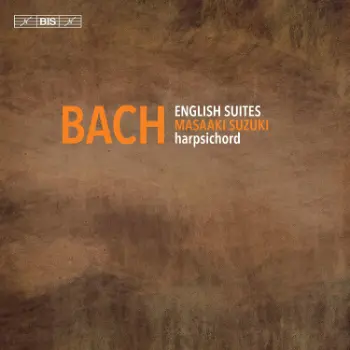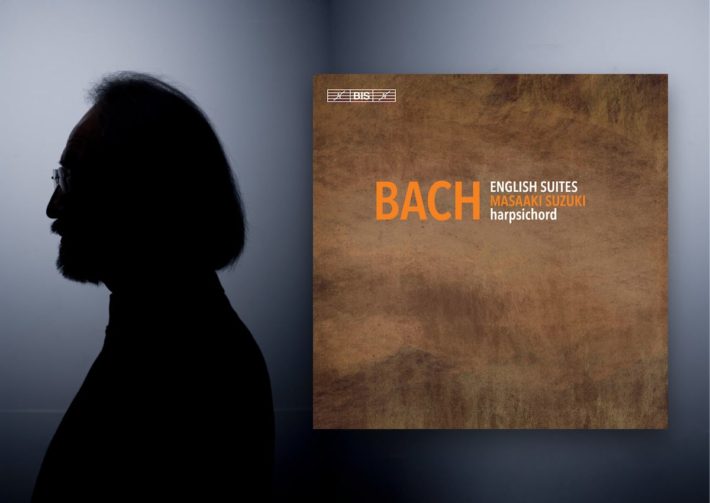Without much fanfare, Masaaki Suzuki has finished recording much of Bach’s great keyboard works; We already saw the French Suites, two volumes of the Well-Tempered Klavier and, of course, the Goldberg Variations. This is in addition to the two volumes of Bach’s organ works, and Suzuki sitting at the Harpsichord in the Musikalisches Opfer, Orchestral Suites, Brandenburg and solo Harpsichord Concertos. Oh, and he recently finished the 60 plus volumes of his religious and secular cantata cycle for BIS. In other words, those familiar with Mr. Suzuki’s way with the instrument will know what to expect.

Suzuki is recorded, as in previous volumes, in the Kobe Shoin Women’s University Chapel in Japan, playing the same instrument – a two manuals Harpsichord by Willem Kroesbergen, built in 1982 after a copy of an enlarged Ruckers. It’s a seductive, rich in sonority instrument, that Suzuki uses to the fullest. This is especially true in the Sarabandes, where the artist often thickens the musical argument with broken chords in the left hand (the fourth, track 4 in the second CD, is particularly lovely).
The preludes are met with a “Toccata”-like attitude, which sounds very appropriate and sparkling with impressive finger work. Where Suzuki’s attitude may raise some eyebrows is in the Courantes, where he sees the phrasing as a Iambic pentameter. Other players have done so in repeats, yet not necessarily as the original way of handling these dances. In addition, some will be annoyed with Suzuki’s constant breakage of the hands, with the bass-line prematurely appearing before the bar (this is most noticeable in the Allemandes and Sarabandes). Yet he is also mesmerizing in the faster dances, with the famous second and third suites’ tempo choices and articulations delightfully executed. The final Gigues are unabashedly virtuosic.
As in previous volumes of the solo works, Suzuki is a master improvisator, with the ornaments in repeats never sounding too mannered nor calling attention for themselves. With many players giving preferential treatment to the later French Suites, it’s nice having Harpsichord player in this caliber contributing to the discography of the English Suites.
In comparing other versions, Richard Egarr, as always, is an illuminating proponent of the modest sound of the instrument, with broader tempi and more simultaneous handwork. Pioneering Bach performer Gustav Leonhardt is a more straight-forward, slightly conservative exponent of the music, with almost no repeats and consistency of rhythm that can be very attractive. Alan Curtis’ late 1970’s version still sounds terrific in the slow dances and in the fast preludes such as No. 2’s. He is much more direct and simpler compared to Suzuki, yet less rigid than Leonhardt’s. Finally, Ketil Haugsand gives a more outlandish version, with seductive slow dances and highly original ornaments. Suzuki’s new album can stand beside those great alternatives, especially when considering this is a CD and an SACD compatible album sold on a single disc. And so this is a significant contribution to the catalog.
Bach – English Suites No. 1–6, BWV 806–811
Masaaki Suzuki – Harpsichord
BIS Records, SACD Hybrid BIS-2281




















